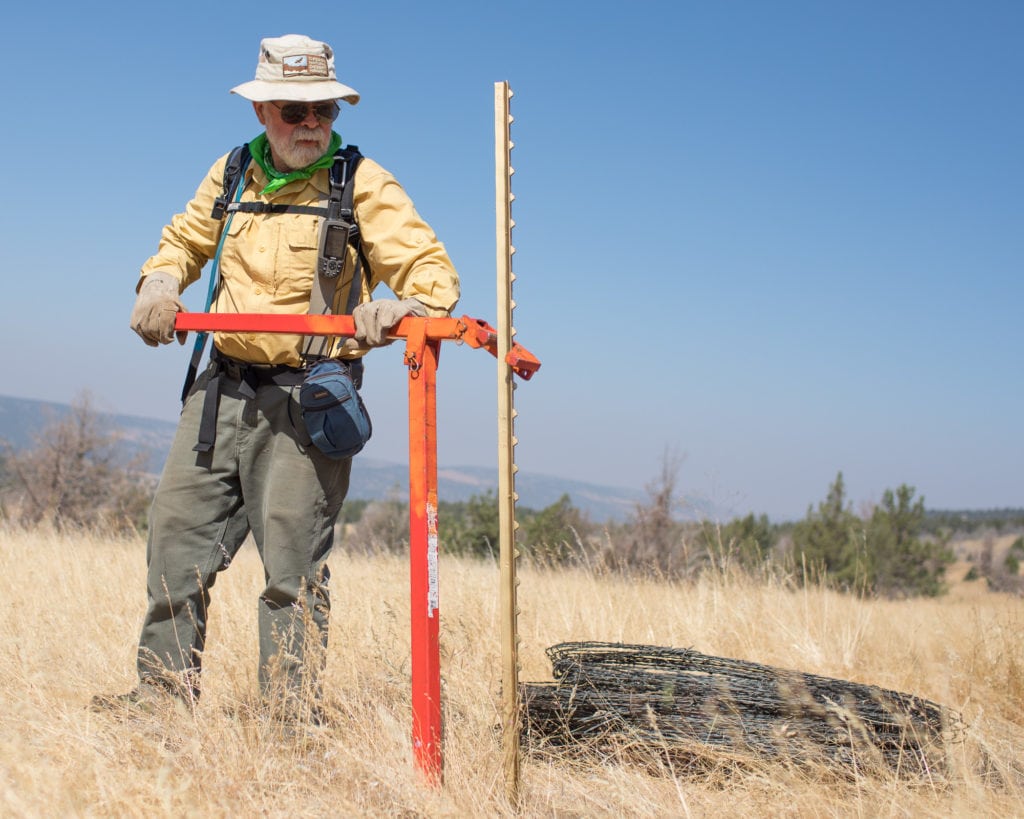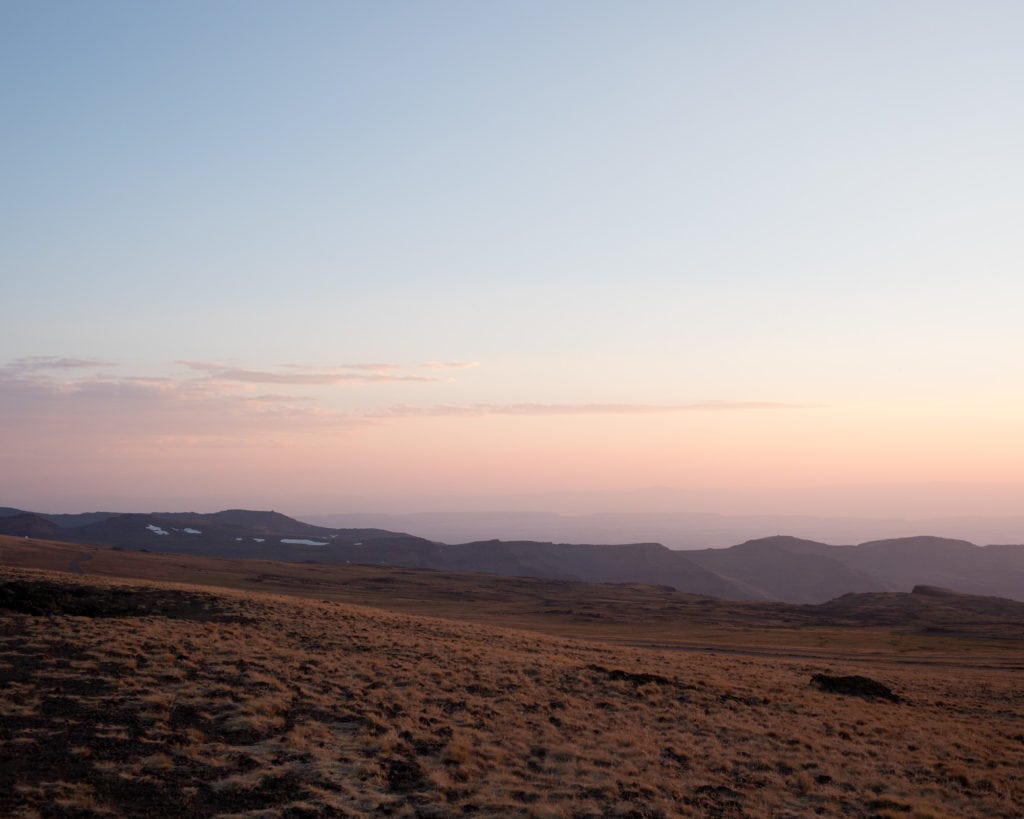Volunteers remove obsolete fence from more than 90,000 acres in the Steens Mountain Wilderness
The 97,229 acre cow-free portion of the Steens Mountain Wilderness Area in southeastern Oregon is now completely free of obsolete barbed wire fence, thanks to the work of Oregon Natural Desert Association (ONDA) volunteers who removed the last two miles of unneeded fence last week.
This team of ten volunteers, participating in an ONDA Stewardship Program work trip, arrived on Wednesday, August 23, and worked for nine hours a day in bakeoven conditions to roll up the spiked wire and pry stakes from the ground. And, on Sunday, August 27, as the culminating moment of more than a decade worth of work, they pulled out the final stake — a stake which had been spray-painted gold to grace the moment with a bit of ceremony.
“It was the opposite of a ground-breaking ceremony. Instead, it was a ground-restoring,” says ONDA Stewardship Director Ben Gordon.
Six-time Steens volunteer Craig Terry pulling “the golden stake,” the culmination of more than a decade of volunteer labor.
Craig Terry, a volunteer in his early 70s from Hood River, Oregon, first volunteered on Steens in 2006 and has been back six times since then. Terry was able to witness the impact of his work on one special September day spent pulling barbed wire fence along a ridgeline.
“While we worked, a pair of pronghorns came up to the fence and turned around because they can’t jump the fence,” he recalled. “The next day, after we’d removed that section, we saw the same pair cross through. Without our work, they wouldn’t be able to move freely across the landscape.”
Barbed wire fence, found throughout public lands in Oregon, poses unnatural hazards for wildlife, and it disrupts connectivity, making it harder for species to move from one crucial piece of habitat to another. Birds can be snagged by it; pronghorn antelope injure themselves when attempting to crawl under it. Sage-grouse are particularly prone to colliding with fences as they take flight and fence posts serve as perches for their predators, so removing fences immediately benefits this threatened species.
ONDA volunteers have pulled out 125 tons of barbed wire— the equivalent weight of 10 school buses, all by hand.
Tom Wilcox, Wilderness Specialist for the Burns District of the Bureau of Land Management thanked ONDA crews for the assistance they’ve provided in preserving the Steens Mountain Wilderness. “With our limited budgets and work-force we would have been hard-pressed to do this important work,” he said, noting that fence removal “increases naturalness in the Wilderness by removing installations that hindered the free movement of wildlife.”
Steens Mountain at sunset.
Steens Mountain is the largest fault block mountain in North America. Its massive glacier-carved gorges are graced with a variety of plants, ranging from tiny wildflowers to stately aspen and juniper, and it provides homes for an array of wildlife, that includes golden eagles, falcons, pronghorn, and more.
With permanent protection secured, habitat restoration came next
ONDA led many years of effort with fellow conservation groups and local stakeholders to secure permanent protection for Steens. They achieved this goal in 2000, when Congress designated the Steens Mountains Cooperative Management and Protection Area and the Steens Mountain Wilderness Area. With protection secured, ONDA turned its attention to restoration and habitat preservation.
Jill Workman, the past Chair of the Oregon Chapter of the Sierra Club, and a tireless advocate for Steens protection, was thrilled to hear that the last fence stake would be pulled from the cow-free portion of the Wilderness in August.
“The Sierra Club organized the first fence pull after the Steens Act went into effect, and we have led and helped with fence pulls over the years,” said Workman, “Efforts really accelerated when ONDA was able to join us and lead multiple fence pulls each year for so many years.”
In addition to removing obsolete fence and other manmade barriers, ONDA has also protected habitat on Steens Mountain by challenging industrial development like the proposed Steens Wind project and championing strong sage-grouse conservation plans.
Removing obsolete barbed wire fence in Oregon’s high desert is just one activity that ONDA volunteers participate in to help restore desert habitat. ONDA volunteers also restore streams, monitor wildlife habitat, and maintain trails.

